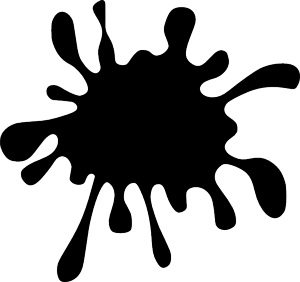
History of Oil Seeps in Santa Barbara
If you have spent much time on the beaches of Santa Barbara, chances are you have encountered small blobs of oil and tar in the water and on the sand. For locals, it’s just something they take in stride. When a tar ball shows up on feet, shoes, or surfboards, people just spray on a product like Oil Slick Beach Tar Remover and the oil comes right off. For visitors not familiar with the history of the area, the sight of tar and oil can make them think there is an oil leak coming from one of the offshore oil platforms sitting on the horizon of the Santa Barbara Channel. The truth is oil, and Santa Barbara have a long history.
For thousands of years, natural seepage of oil has occurred in the waters between the Santa Barbara coastline and the Channel Islands. Written records from as far back as 1792, describe effects of offshore seeps in the Santa Barbara Channel. Oil and tar was noted by Captain Cook's navigator George Vancouver when passing through the channel in the late 1700s. It is also commonly assumed that the local Chumash Native Americans used seep oil washed up on the beaches to seal their plank canoes.
Natural oil seepage occurs when pressure pushes oil sitting in large underground pools sitting offshore, up through fissures and cracks in the sea bottom. Because Santa Barbara is very geologically active, extensive faulting or rupturing in the Earth constantly allows oil and gas to escape. Researchers found that natural offshore seeps near Goleta, alone have leaked up to 25 tons of oil each day – for the last several hundred thousand years. In the last 50 years, with oil drilling and pumping off the coast, some of the natural oil seepage that has occurred in the past has somewhat diminished; meaning less tar balls.
The 1969 offshore oil disaster
While oil drilling in the Santa Barbara Channel may have some upsides, in 1969 a massive spill from an offshore platform transformed the public’s view of the American petroleum industry. The spill and the damage it caused helped launch the modern environmental movement and the Environmental Protection Agency.
On January 28, 1969, a Union Oil Company drilling platform six miles off Santa Barbara, suffered a blowout (uncontrolled release of oil). Between 80,000 barrels and 100,000 barrels of oil flowed into the Pacific Ocean and onto beaches, including Summerland (where the U.S. offshore industry began in 1896 with drilling on oil well piers). A team was able to cap the hole, but it led to a tremendous buildup of pressure. The expanding mass created five breaks in a fault on the ocean floor, releasing oil and gas from deep beneath the earth. It took workers days to control the well – by pumping a massive amount of drilling mud down the borehole. On the eleventh day, chemical mud was successfully used to seal the cracks in the seafloor, but only after approximately three million gallons of oil escaped.
Images of spilled oil bubbling to the ocean’s surface and covering birds and other wildlife horrified people around the country and eventually lead to the first Earth Day the following year.
The Santa Barbara Maritime Museum educates young people about California’s offshore industries, including the diving technologies used in the Santa Barbara Channel. Exhibits explain the continuing process of oil emerging from natural seeps in the channel – today visited by tourists in boats.
While the Santa Barbara area is most famous for natural oil seepage, it also occurs in the Gulf of Mexico and even the Great Salt Lake of Utah. So the next time you come across a natural tar ball you are seeing a bit of gooey history that has been part of the landscape for hundreds of generations.

